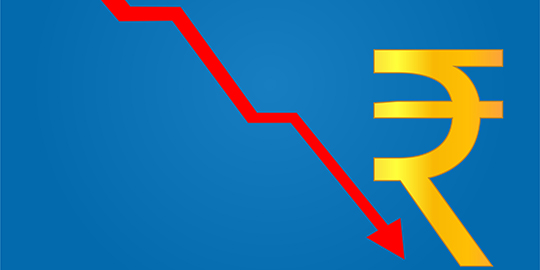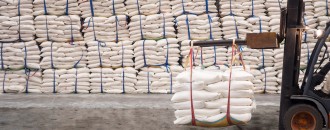
Currency war across Asia to intensify competition in export market
Himanshu Vatsa and Sai Nikesh | The Dollar Business
Declining value of Indian rupee against the US dollar may prove to be a double whammy for exporters, as the currency war triggered by depreciation of Chinese Yuan is expected to intensify competition among emerging countries in the region. The depreciation of Yuan by almost 3% earlier this month by the Chinese central bank has crumbled the stock markets across Asia and the world. The Indian stock market fell by more than 5% on Monday, wiping out millions of funds put in by investors across sectors. Though the stock recovered marginally on Tuesday, Indian rupee was at Rs.66.70 per US dollar. Analysts say that exporters from India and other countries will scramble to grab international buyers and the new trend will lead to further fall in the commodity prices that have already hit the 2007-level. Export bodies have expressed concerned that the rush to grab more shipment orders will eat out exporters’ additional gain in terms of foreign exchange due to rupee devaluation. “Crash of rupee to almost two year low does not automatically result in a comparative advantage to exporters because it is not only the Indian currency, but several currencies in the emerging markets which have lost under the impact of meltdown of global stocks,” said Anupam Shah, Chairman, Engineering Export Promotion Council. “The emerging economies are the major competitors of Indian products in the global markets. With weakness to currencies all across the emerging markets' pack, no unique advantage accrues to India,” he told The Dollar Business. Exporters say that fall in rupee value brings only short-term benefits because buyers will soon start demanding more discounts in future orders. “Exporters do not want short-term gains. They do not want instability in the market. Though it will be beneficial in receiving payments of previous order, buyers will soon ask for more discounts and will calculate all the cost reduction while placing further orders,” Tilak Raj Manaktala, President of Delhi Exporters Association, told The Dollar Business. According to the Federation of Indian Export Organisations (FIEO), volatility in the currency market will increase hedging cost for the exporters. “Such high volatility will not add competitiveness to exports as the exchange rate being volatile cannot be factored into prices, though it may increase the hedging cost for the exporters. Only miniscule exporters who have not hedged their risk and received their payment may get windfall gain,” said S C Ralhan, President, FIEO. Whereas, the Indian government and central bank, on Monday, said that the turmoil in the country’s stock market is only temporary and will not impact the economy. India’s trade deficit during April-July this year was more than $45 billion with exports worth $89.82 billion and imports worth $134.86 billion. Decline in rupee will increase the country’s import cost adding to its current account deficit.
August 25, 2015 | 4:21pm IST.






 to success.
to success.